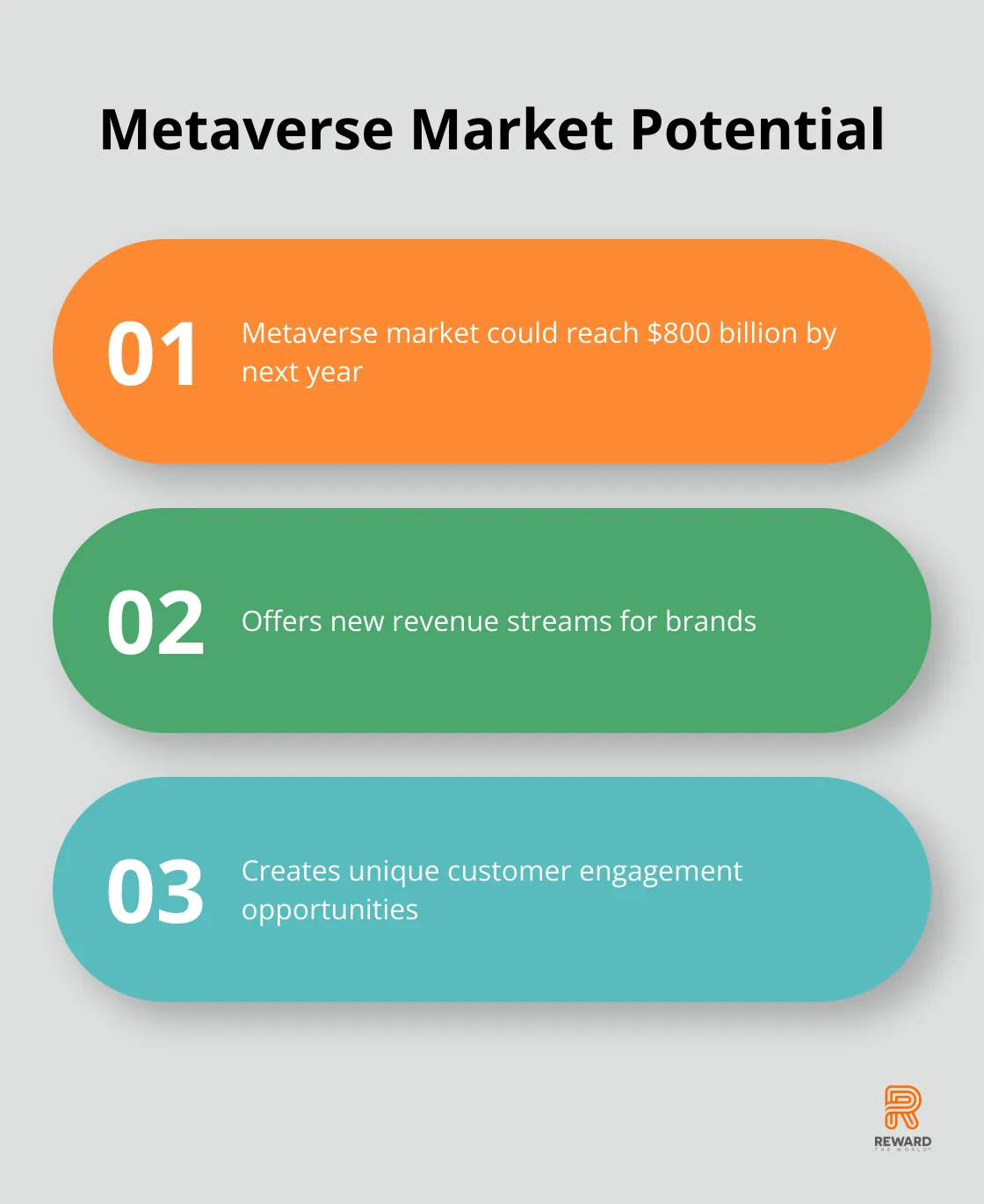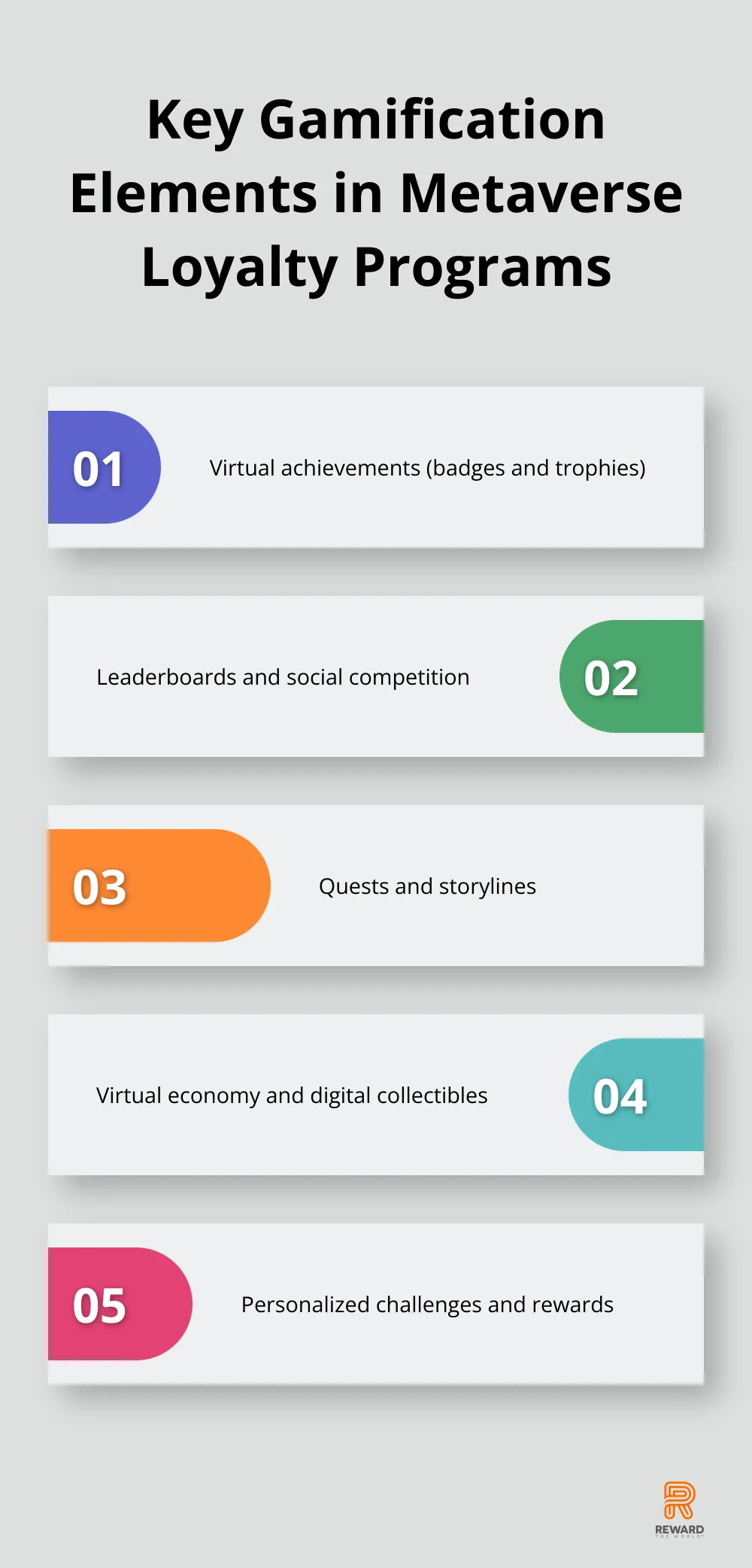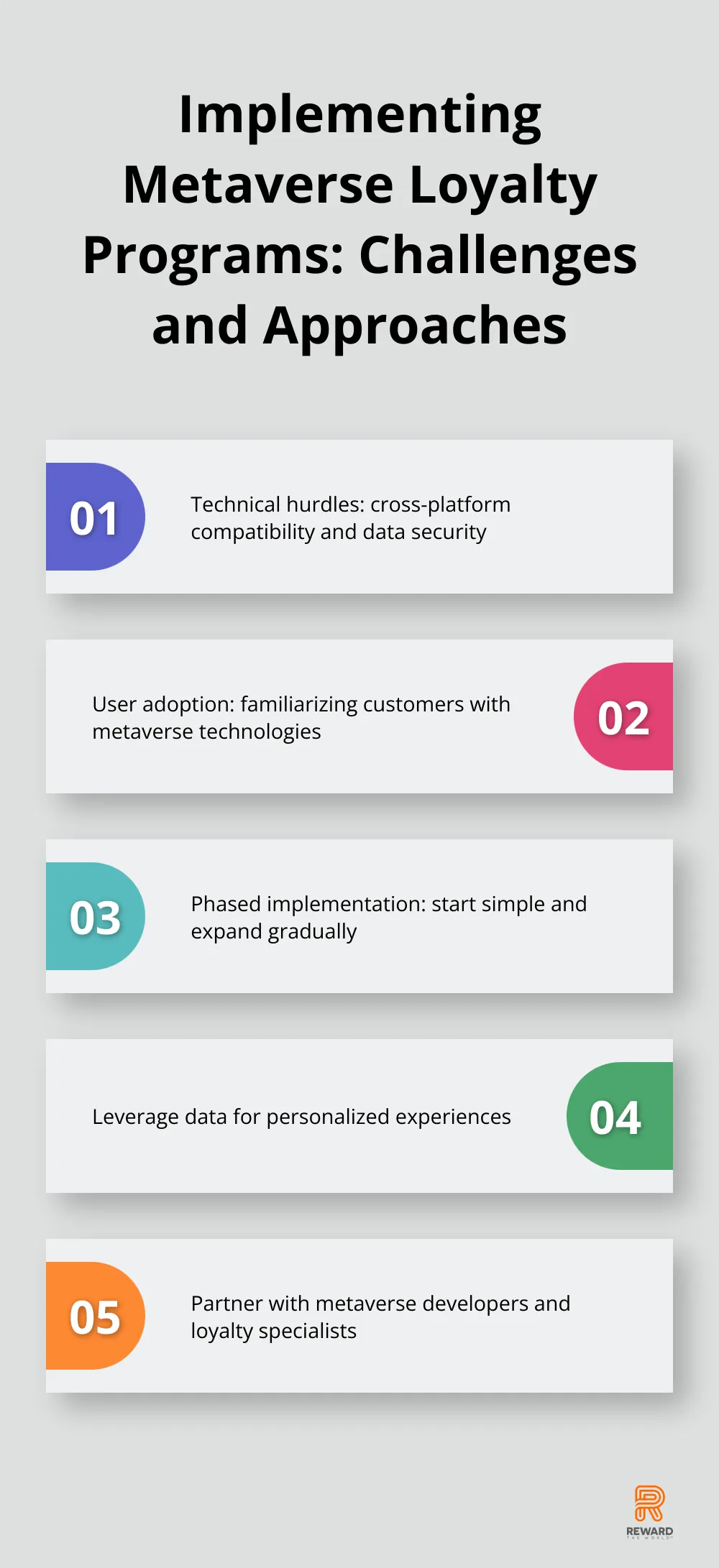
The metaverse is reshaping how brands connect with customers, offering immersive virtual experiences that blur the lines between digital and physical worlds. At Reward the World, we’re excited about the potential of gamified loyalty programs in this new frontier.
Imagine earning points, unlocking exclusive rewards, and engaging with your favorite brands in stunning 3D environments. This blog post explores how companies can leverage the metaverse to create unforgettable customer experiences and boost loyalty.
What Is the Metaverse and Why Should Brands Care?
The metaverse represents more than a mere buzzword; it’s a digital frontier where virtual and physical realities converge, creating immersive experiences that reshape our interactions, work, and play. For brands, this presents an unprecedented opportunity to engage customers in ways previously unimaginable.
The Metaverse Explained
Picture the metaverse as a 3D version of the internet-a persistent, shared virtual space where users interact with digital objects and each other in real-time. Unlike traditional websites or apps, the metaverse offers a sense of presence and immersion that feels tangible and real.
A report by Bloomberg Intelligence projects the metaverse market could approach $800 billion as early as next year. This staggering figure underscores the potential for brands to tap into new revenue streams and customer engagement opportunities.

Brand Engagement in Virtual Worlds
The metaverse unlocks exciting possibilities for customer loyalty programs. Brands can create virtual stores, host events, and offer exclusive experiences that transcend the boundaries between digital and physical rewards. This level of engagement surpasses traditional point-based systems.
Consider a fashion brand hosting a virtual fashion show where loyal customers’ avatars strut the runway in exclusive digital outfits. These digital items could then transform into physical products or remain wearable in other metaverse spaces, creating a seamless bridge between virtual and real-world experiences.
Pioneers in the Metaverse
Several forward-thinking brands have already planted their flags in the metaverse:
Nike launched Nikeland in Roblox, a virtual world where users play games, interact with other players, and try on virtual Nike products. This initiative boosts brand awareness and allows Nike to test new product designs in a virtual space before physical production.
Gucci created the Gucci Garden on Roblox, an immersive multimedia experience combining the brand’s creative vision with gaming. During a week-long event in June, a digital GG Monogram Gucci Blondie Bag was sold for 325 Robux (about $5) and was available only after people played 100 mini-games, showcasing the potential for digital goods in the metaverse.
Coca-Cola auctioned its first-ever NFT collectibles, including a custom jacket wearable in the virtual world Decentraland. This move demonstrates how brands can create unique, limited-edition digital assets that hold real value for collectors and enthusiasts.
The Future of Loyalty in Virtual Realms
As the metaverse evolves, brands that embrace this new frontier will gain a significant advantage in capturing customer attention and loyalty. The key lies in starting experimentation now, learning from early adopters, and developing strategies that leverage the unique capabilities of virtual worlds.
With the metaverse poised to revolutionize customer engagement, the next logical step involves exploring how gamification techniques can enhance loyalty programs in these virtual environments. Let’s examine how brands can harness the power of game mechanics to create truly immersive and rewarding experiences for their customers across multiple realities.
How Gamification Boosts Loyalty in Virtual Worlds

The Power of Virtual Achievements
Virtual rewards like badges and trophies serve as visible symbols of customer achievement. They tap into customers’ desire for recognition and status. When implemented effectively, these virtual achievements can transform loyalty programs into engaging experiences. A coffee chain could award a Golden Bean badge for customers who try every seasonal drink in their virtual cafe. This strategy encourages product exploration and creates a sense of accomplishment, keeping customers invested in the brand experience.
Leaderboards and Social Competition
Leaderboards tap into our competitive nature, spurring engagement through social comparison. In the metaverse, these can become visually stunning and dynamically updated features. Picture a virtual city where the most loyal customers’ avatars appear on billboards, or a VIP lounge that only the top 100 point earners can access. This visibility not only rewards top customers but also motivates others to increase their engagement.
Quests and Storylines
Narrative-driven quests offer a compelling way to guide customers through brand experiences. A sportswear company could create a virtual fitness journey, where workout completions and product trials unlock chapters in an ongoing story. This approach encourages regular engagement and creates an emotional connection to the brand narrative.
Starbucks Odyssey exemplifies this strategy, blending NFTs with their existing rewards program. Announced in September 2022, Starbucks Odyssey allows members to collect stars in NFT format. This innovative program has seen high engagement, with some limited-edition NFTs selling out in minutes.
Virtual Economy and Digital Collectibles
A virtual economy within the metaverse loyalty program can drive long-term engagement. Digital collectibles (whether NFTs or in-platform items) give customers a sense of ownership and investment in the brand ecosystem. These items can range from avatar accessories to virtual real estate, each offering unique benefits within the metaverse.
Nike’s approach with RTFKT Studios demonstrates this potential. Nike’s first collection of NFT sneakers, called CryptoKicks, was created in conjunction with RTFKT Studios. These digital shoes are available as NFTs that can be worn by avatars in various metaverse platforms, bridging the gap between physical and digital products.
Personalized Challenges and Rewards
AI and data analytics enable brands to offer personalized challenges tailored to individual customer preferences and behaviors. These custom quests feel more relevant to the user and drive specific behaviors that benefit the brand. For example, a bookstore could challenge a sci-fi fan to explore new authors in the genre, rewarding them with exclusive virtual book signings or author meet-and-greets in the metaverse.
As we move forward, the integration of these gamification techniques into metaverse loyalty programs will become increasingly sophisticated. The next section will explore how brands can implement these strategies effectively, creating seamless experiences that bridge the virtual and physical worlds.
How Brands Can Build Metaverse Loyalty Programs
Crafting Immersive Virtual Rewards
The metaverse opens up new possibilities for unique, memorable rewards. Brands can offer exclusive virtual items that enhance customer relationships, service, engagement, satisfaction, and overall experience. A luxury car manufacturer could provide virtual test drives of concept cars not yet available in the physical world, giving loyal customers a truly exclusive experience.
Virtual events serve as another powerful tool. A music streaming service could host private concerts in the metaverse, where top-tier loyalty members interact with their favorite artists in real-time. These experiences create emotional connections that traditional loyalty programs can’t match.
Bridging Virtual and Physical Worlds
Metaverse loyalty programs have the potential to seamlessly blend virtual and physical rewards. A sportswear brand could offer virtual fitness classes where participants earn points redeemable for physical products. This approach encourages engagement in the metaverse and drives real-world sales.
Starbucks Odyssey program combines the company’s successful Starbucks Rewards loyalty program with an NFT platform. Customers earn both traditional stars and NFT stamps. These digital collectibles unlock real-world experiences, such as coffee-tasting sessions or trips to Starbucks coffee farms.
Overcoming Technical and User Adoption Challenges
While metaverse loyalty programs offer enormous potential, brands face significant implementation challenges. Technical hurdles, like ensuring seamless cross-platform compatibility and maintaining data security, require substantial investment and expertise.
User adoption presents another major obstacle. Many consumers remain unfamiliar or uncomfortable with metaverse technologies. Brands must focus on creating intuitive, user-friendly experiences that gradually introduce customers to these new virtual environments.

Phased Implementation Approach
To address these challenges, a phased approach works best. Brands should start with simple metaverse elements that complement existing loyalty programs, then expand as user comfort and technology evolve. Partnering with experienced metaverse developers and loyalty program specialists (like Reward the World) can help navigate these complex waters.
Leveraging Data and Personalization
The metaverse offers unprecedented opportunities for data collection and personalization. Brands can track user behavior, preferences, and interactions in real-time, allowing for highly tailored rewards and experiences. This level of personalization can significantly boost engagement and loyalty.
For example, a bookstore could use a customer’s virtual browsing history to recommend personalized reading challenges, with rewards tailored to their specific interests. This data-driven approach creates a more engaging and relevant loyalty experience for each user. Real-time customer support and personalized services within the Metaverse elevate customer satisfaction and trust, leading to heightened levels of loyalty.
Final Thoughts
The metaverse will transform loyalty programs through immersive virtual experiences. Brands must plan and experiment now to create unique value in these digital environments. Success depends on offering genuine utility and entertainment that aligns with brand values and resonates with target audiences.
Data will drive personalized experiences in new loyalty ecosystems. Brands that leverage user insights effectively will gain a competitive edge. However, user privacy and data security must remain top priorities to build trust in virtual spaces.
Reward the World offers a platform to help businesses create engaging loyalty experiences across multiple channels. Our global incentives platform provides instant reward delivery and caters to various demographics and budgets. We strive to elevate customer engagement strategies in the metaverse and beyond.
